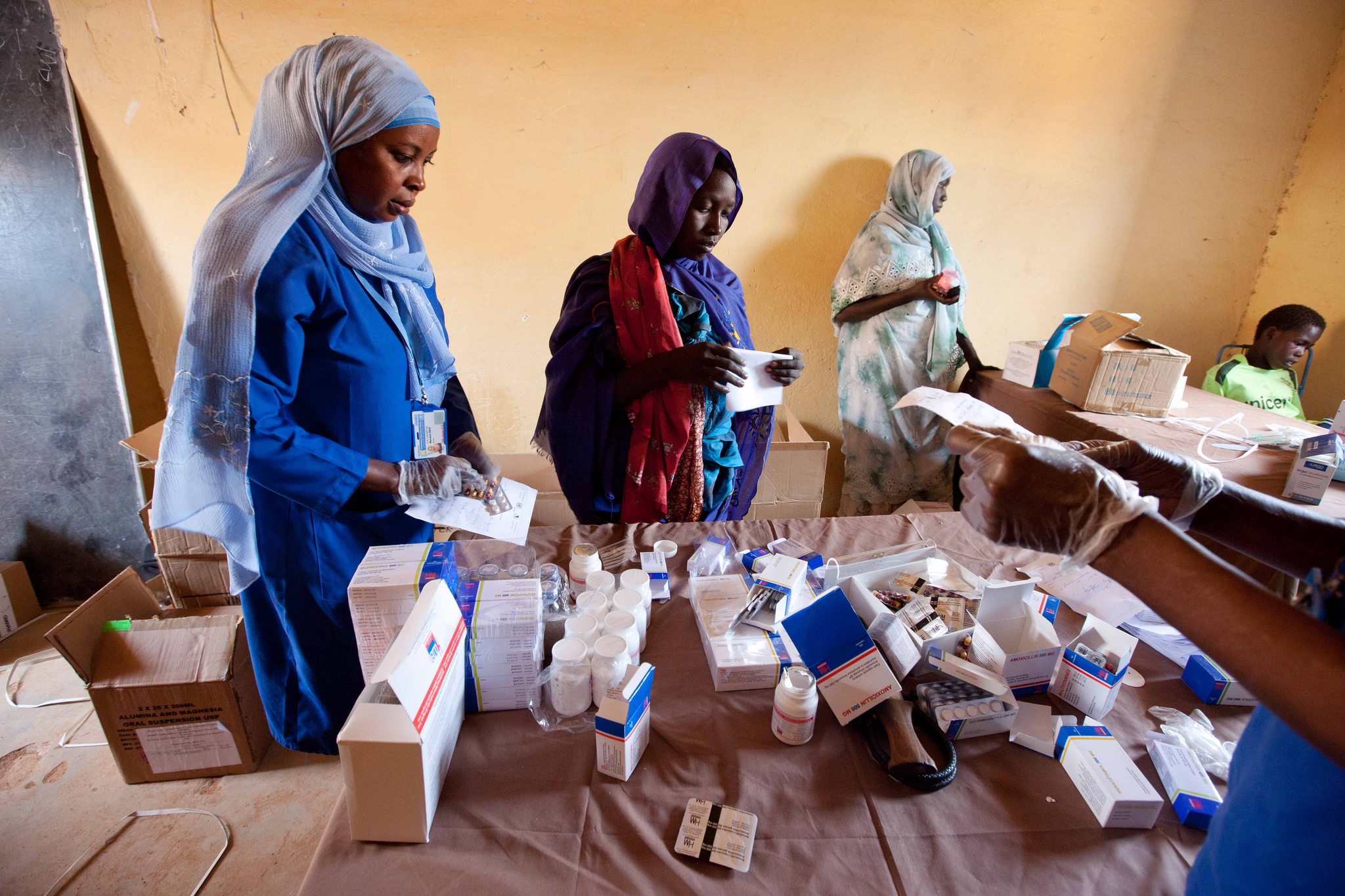AS-AQ Post-Treatment Prophylaxis Study Group
AS-AQ Post-Treatment Prophylaxis Study Group

Modeling the protective effect of Artesunate-Amodiaquine (AS-AQ) and its epidemiological impact on Plasmodium falciparum malaria in Africa
The Artesunate-Amodiaquine (AS-AQ) Post-Treatment Prophylaxis Study Group was formed in October 2013, with an open invitation to investigators with relevant data sets to join. Known research groups with relevant data sets were contacted between October and November 2013. Data was gathered between December 2013 and January 2014. Analysis was completed by the end of 2014, and the study group members are currently working on a draft manuscript. The AS-AQ Post-Treatment Prophylaxis Study Group manuscript is currently being finalised and is under review at BMC Medicine.
Current malaria treatment contains artemisinin derivatives combined with longer-acting partner drugs [1]. These may continue to benefit the patient after cure is achieved by protecting them against reinfection while the drug remains in the bloodstream. In areas with high malaria transmission this may be particularly important and could reduce malaria transmission within the whole community as well as protecting individual patients [2]. A potential post-treatment prophylactic effect of the amodiaquine component of the artemisinin combination therapy artesunate-amodiaquine (AS-AQ) has been shown [3]. Therefore, AS-AQ has the potential to reduce malaria morbidity and transmission but the size of this effect is not known.
- To quantify the duration of post-treatment prophylaxis mediated by AS-AQ and how it depends on host factors.
- To integrate these estimates into an existing mathematical model of Plasmodium falciparum epidemiology [4].
- To evaluate, using said model, the potential for reduction of malaria transmission and morbidity by using AS-AQ as first line treatment, and contrasting this with the alternative first-line treatments artemether-lumefantrine (AL) and dihydroartemisinin-piperaquine (DHA-PQP).
- Randomized clinical trial treating uncomplicated malaria patients with AS-AQ and comparing with AL or DHA-PQP
- Follow up to at least 28 days, preferably more, with a follow up at around day 14 and another before day 28.
- PCR corrected cure rates at each follow up, allowing estimation of time to re-infection.
- PCR-unadjusted cure rates of <95% in at least one trial arm by day 28.
- Individual patient data on exact dosage of AS-AQ received by patients (dosage per tablets, number of tablets given per dose, duration of treatment).
- Preferred but not essential information includes pharmacokinetic data, whether doses were supervised, whether drugs were administered with fat, and local transmission intensity (slide-prevalence or EIR).
The analysis will use datasets from the WWARN repository which have been standardized and pooled into a single database of quality-assured individual patient data. Analyses (subject to Study Group approval) may include the following.
Time-to-reinfection will be interpreted by a nonlinear statistical model which incorporates PK/PD and clinical immunity. Existing PK models which have been fitted to data, ideally in similar study populations, will be used and their parameters kept fixed [3, 5–7]. The obtained PD estimates will be incorporated into our mathematical model of P. falciparum epidemiology [4], and simulations will be performed exploring the public-health impact of introducing AS-AQ as first-line drug.
The first outcome of this analysis will be an estimate of the pharmacodynamic parameters of amodiaquine, and the duration of post-treatment prophylaxis it provides. The second outcome will be a quantitative assessment of the impact of using AS-AQ as first-line drug throughout Africa, at the resolution of the first administrative unit (sub-national regions). Inputs into the model include local intensity and seasonality of malaria transmission and coverage of LLINs and treatment. Outcome variables of interest will be the number of clinical episodes averted; reduction in slide-prevalence of infection and entomological inoculation rate (EIR). We will compare this with scenarios where AL and DHA-PQP are first-line therapies. The expected outcome is that different drugs will be optimal in different settings depending on local epidemiology.
The Study Group comprises participating investigators who contribute relevant data sets to the pooled analysis. Data sets remain the property of the investigator. The Study Group collectively makes decisions with respect to including additional studies, data analysis and plans for publication, in line with the WWARN Publication Policy.
For further information, email Dr. Lucy Okell l.okell@imperial.ac.uk or Dr. Michael Bretscher m.bretscher@imperial.ac.uk .
1. Davis TME, Karunajeewa HA, Ilett KF: Artemisinin-based combination therapies for uncomplicated malaria. Med. J. Aust. 2005, 182:181–185.
2. Okell LC, Drakeley CJ, Bousema T, Whitty CJM, Ghani AC: Modelling the Impact of Artemisinin Combination Therapy and Long-Acting Treatments on Malaria Transmission Intensity. PLoS Med. 2008, 5.
3. Tarning J, Chotsiri P, Jullien V, Rijken MJ, Bergstrand M, Cammas M, McGready R, Singhasivanon P, Day NPJ, White NJ, Nosten F, Lindegardh N: Population Pharmacokinetic and Pharmacodynamic Modeling of Amodiaquine and Desethylamodiaquine in Women with Plasmodium vivax Malaria during and after Pregnancy. Antimicrob. Agents Chemother. 2012, 56:5764–5773.
4. Griffin JT, Hollingsworth TD, Okell LC, Churcher TS, White M, Hinsley W, Bousema T, Drakeley CJ, Ferguson NM, Basáñez M-G, Ghani AC: Reducing Plasmodium falciparum Malaria Transmission in Africa: A Model-Based Evaluation of Intervention Strategies. PLoS Med. 2010, 7.
5. Jullien V, Ogutu B, Juma E, Carn G, Obonyo C, Kiechel J-R: Population Pharmacokinetics and Pharmacodynamic Considerations of Amodiaquine and Desethylamodiaquine in Kenyan Adults with Uncomplicated Malaria Receiving Artesunate-Amodiaquine Combination Therapy. Antimicrob. Agents Chemother. 2010, 54:2611–2617.
6. Mwesigwa J, Parikh S, McGee B, German P, Drysdale T, Kalyango JN, Clark TD, Dorsey G, Lindegardh N, Annerberg A, Rosenthal PJ, Kamya MR, Aweeka F: Pharmacokinetics of Artemether-Lumefantrine and Artesunate-Amodiaquine in Children in Kampala, Uganda. Antimicrob. Agents Chemother. 2010, 54:52–59.
7. Stepniewska K, Taylor W, Sirima SB, Ouedraogo EB, Ouedraogo A, Gansane A, Simpson JA, Morgan CC, White NJ, Kiechel J-R: Population pharmacokinetics of artesunate and amodiaquine in African children. Malar. J. 2009, 8:200.

